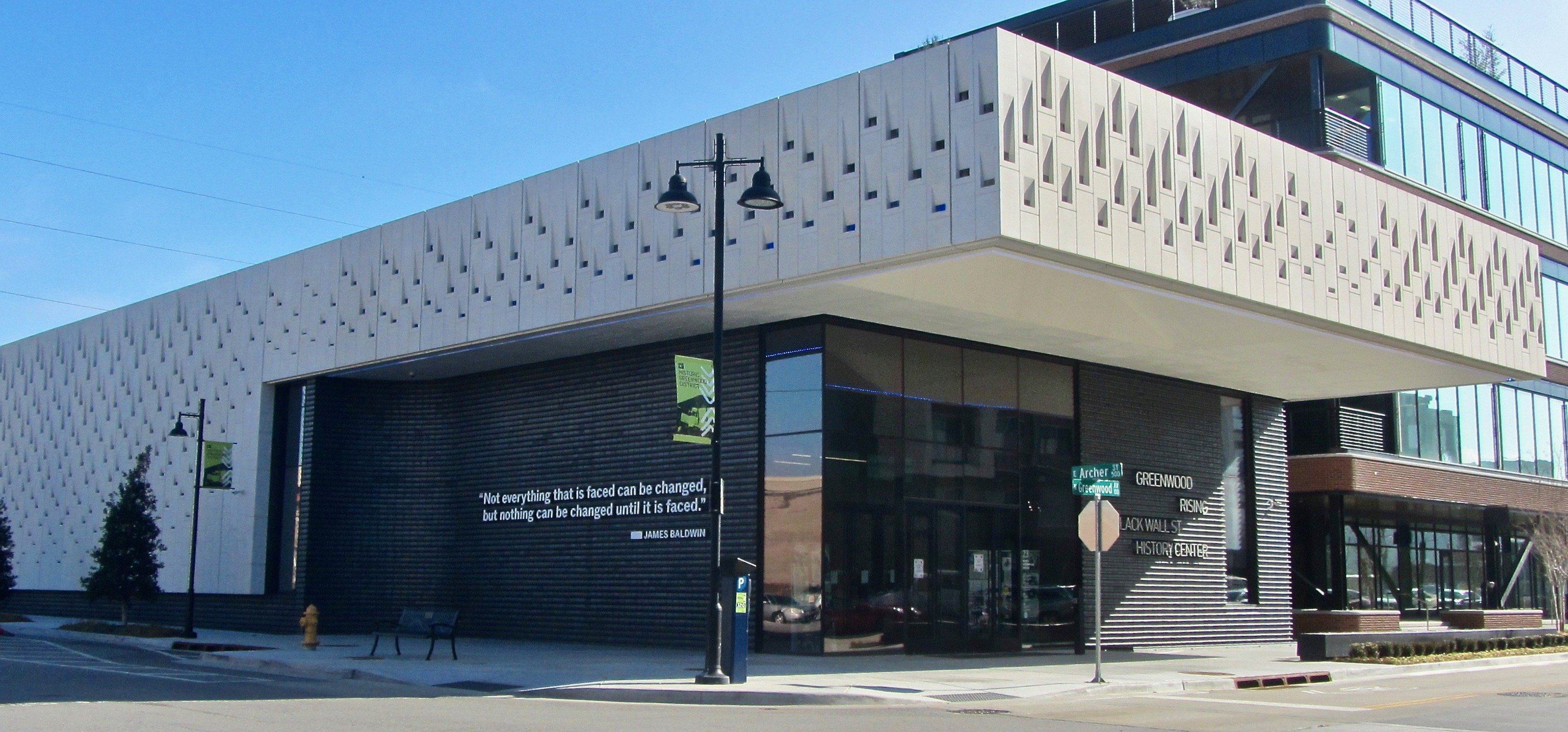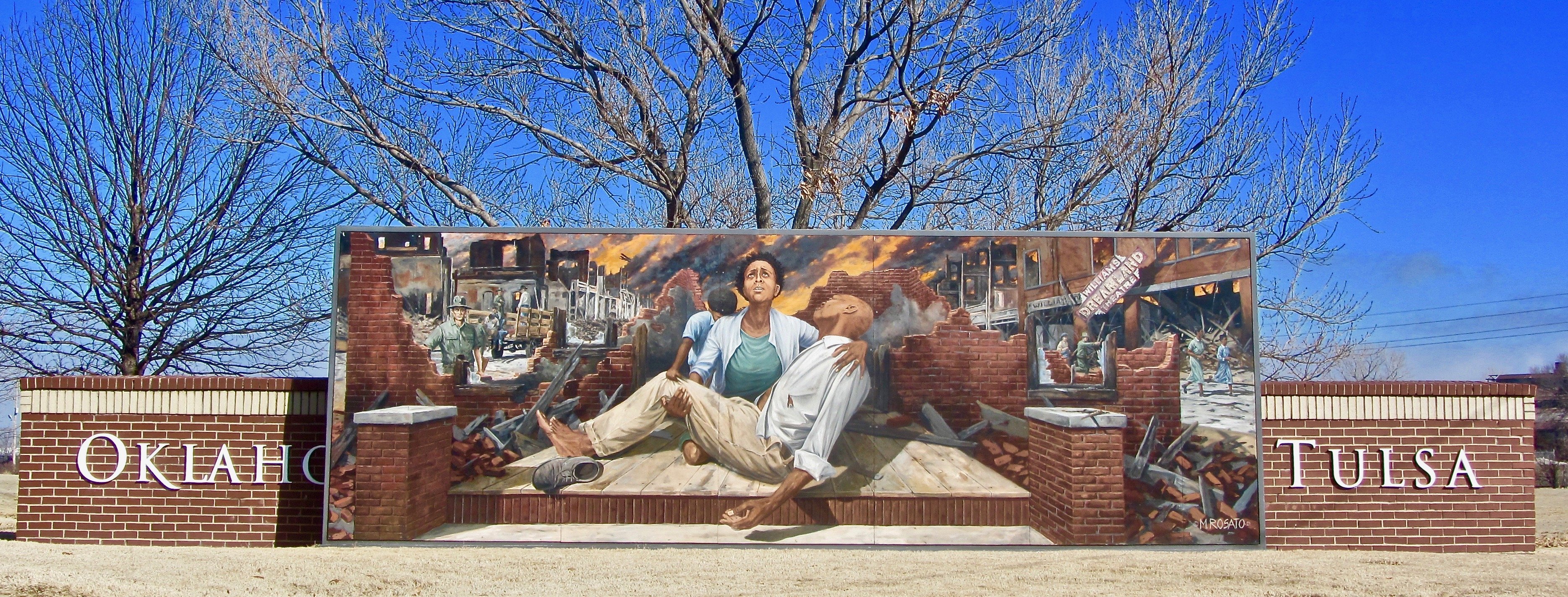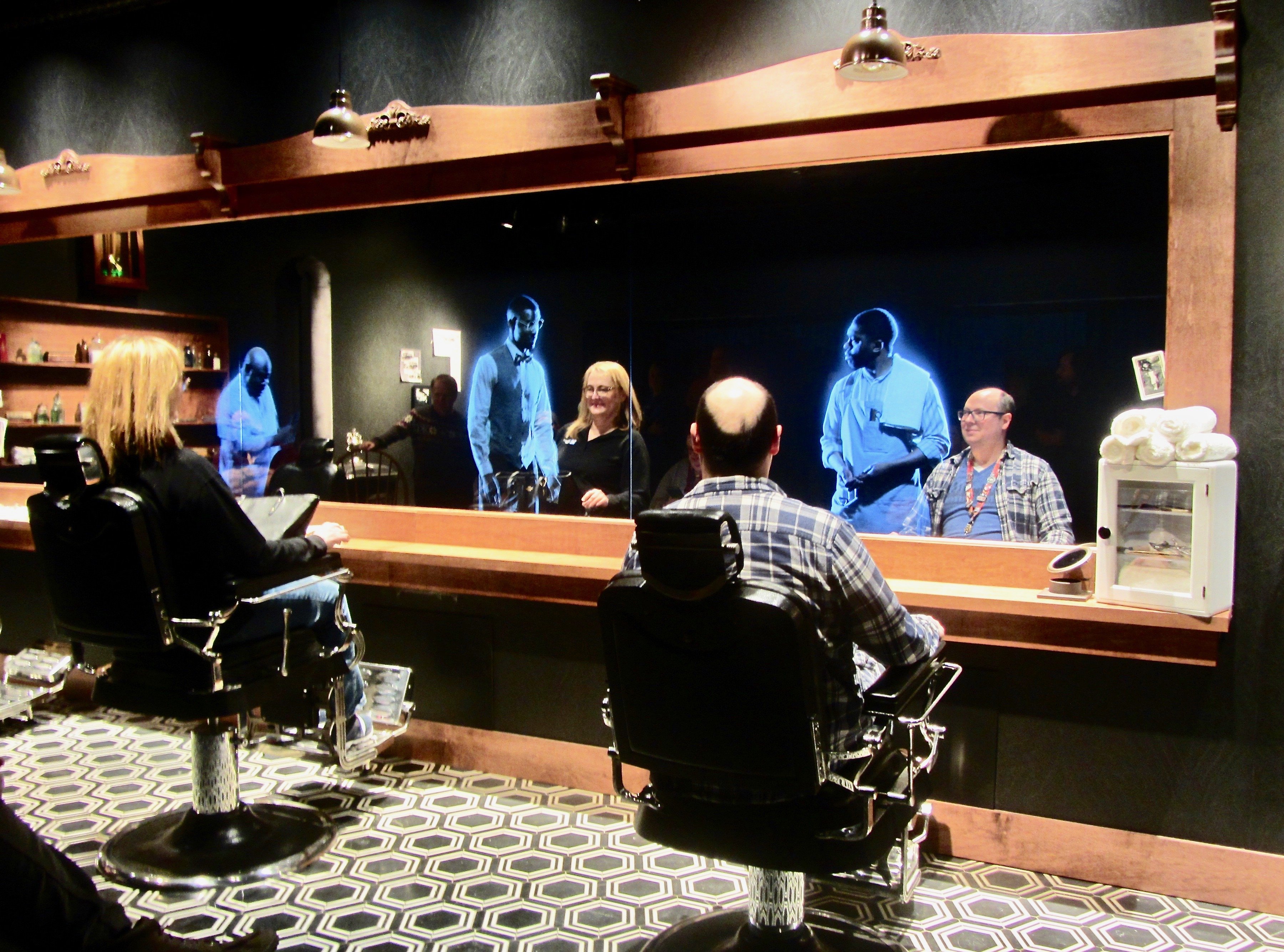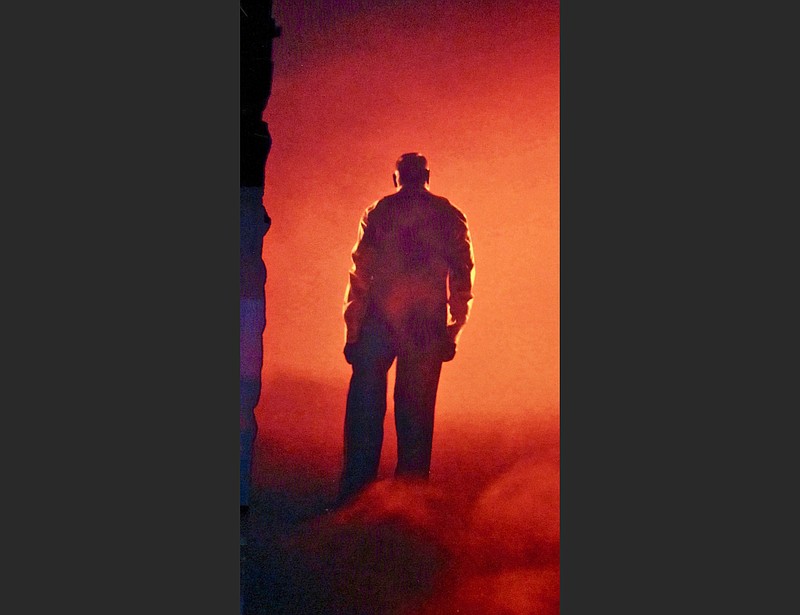TULSA — A century after the horrific destruction of a thriving Black neighborhood by white mobs, a cautionary sign greets visitors in the lobby of Tulsa's Greenwood Rising museum:
"Greenwood Rising aims to honestly present the events in our nation's history without shying away from our darkest moments. We understand the discomfort that may come from confronting this difficult history and value the emotional well-being of all visitors."
A more forceful warning confronts museumgoers just before they encounter the exhibits focused on the mob violence of May 31-June 2, 1921:
"The following galleries contain images, language and audio that depict racial violence in America that may be difficult for or triggering to some visitors. This includes an immersive media experience of the 1921 Tulsa Race Massacre."
The experience, including holography and other visual creativity, is definitely immersive. And some of the content can be stomach-churning, as Tulsa's spasm of white violence unfolds with visceral impact against the community then known as "Black Wall Street." That laudatory label had been coined by Booker T. Washington, although he used the era's term of "Negro Wall Street."
Igniting the three days of terror was a false rumor that a young Black man had attacked a white woman in an elevator of a downtown building. At most, he may have accidentally bumped into her. But the erroneous report sparked the arson and shooting. Museum photographs show the leveled 35 square blocks of residential and commercial property, looking as if they had suffered an intense bombing raid. As many as 300 Black people lost their lives and 10,000 or more were left homeless.
Police did nothing to try halting the violence and sometimes joined in. No white people were arrested, but as many as 6,000 Black people were temporarily held under armed guard at the local fairgrounds. Later the victims received no insurance compensation or other justice, but still went on to rebuild many of their houses and businesses.
To most white people in Tulsa and the rest of America, meanwhile, it was as though the massacre had never happened. Only in 2000 was the topic included in the state history curriculum of Oklahoma public schools. In 2001, the Tulsa Race Riot Commission (later renamed the Tulsa Race Massacre Commission) released a mainly accurate report after more than a decade of deliberations. One paragraph in the summary cut to the heart of the matter, telling a hard truth now amplified by the museum's contents:
"It gets down to this: The 1921 riot is, at once, a representative historical example and a unique historical event. It has many parallels in the pattern of past events, but it has no equal for its violence and its completeness. It symbolizes so much endured by so many for so long. It does this, however, in one way that no other can: in the living flesh and blood of some who did endure it."
 Greenwood Rising museum, dedicated in 2021, is open every day of the week except Tuesday. (Special to the Democrat-Gazette/Marcia Schnedler)
Greenwood Rising museum, dedicated in 2021, is open every day of the week except Tuesday. (Special to the Democrat-Gazette/Marcia Schnedler)
REQUIRED GUIDED TOUR
To begin the required guided tour at Greenwood Rising, which opened in mid-2021, visitors watch a stage-setting video. Next, galleries labeled "Greenwood Spirit" pay tribute to founders of the Black neighborhood later targeted by the hateful white mobs.
Among the Black Wall Street luminaries are the likes of Simon Berry, described as "an entrepreneur extraordinaire who started a jitney service, founded a bus line and shuttled wealthy oil barons on his charter plane service. Busy businessman Berry was also the proprietor of the Royal Hotel."
Holography comes into play at the following two exhibits, the first showing storefronts from Greenwood's heyday. The second is exceptional here for its dashes of humor.
The 3D setting is a Black Tulsa barbershop of the period, with actual swivel chairs set in front of a window. The three holographic barbers behind the glass banter on topics that range from cheap customers who barely tip to the growing undercurrent of white resentment about local Black success.
Visitors are welcome to sit in the chairs, where their reflection is meshed with a barber's projected image. The clever juxtaposition makes it look as if the seated tour members are actually getting haircuts. The setup evokes the only chuckles of the tour before the grim images that follow.
Setting the stage for 1921 is a gallery lined with gruesome historical photographs that include the deeply scarred back of a slave after a vicious whipping. Another image shows a lynched Black woman and her son dangling from a bridge, while several dozen white spectators peer down at the corpses. Displayed next to photos of hooded Ku Klux Klansmen is a white robe worn by a local night rider whose name has been identified by researchers.
FIRE AND TORMENT
Grim as they are, these encounters barely prepare visitors for the museum's literally and figuratively incandescent multimedia centerpiece. Images flash on ceiling-high screens of the mob-set fires and the torment of Black victims. The visual terror is paired with printed quotations adapted from survivors' accounts.
In one scene, a Black man shrouded by background flames is kneeling with a hand raised in a beseeching posture. The caption has him begging, "Please don't set my house on fire. Please! Don't set my house on fire!" A post-riot photograph showing charred skeletons of buildings carries a mournful quote: "Everything was burned, everything."
Visitors have a chance to decompress in the remaining galleries. They portray the rebuilding of the Greenwood neighborhood by the end of the 1920s and its vicissitudes during the Great Depression of the 1930s. Then came renewed vigor during and after World II, before the misnomer of "urban renewal" stabbed an interstate highway through its spine in the 1960s.
The timeline from the Black Wall Street era to the 21st century is summed up by a posting in the lobby: "This is the land on which the Greenwood District was built, destroyed, rebuilt, dismantled and reborn."
Available on the way out is a free publication well worth taking for further insights. It is a reprint of "The Tragedy of Tulsa," a special 64-page section printed by the Tulsa World for the event's 100th anniversary in 2021. The exhaustive account could be seen as an act of atonement by the newspaper, which fueled the rioting with biased reporting and inflammatory editorials.
 A mural by Michael Rosato shows a woman holding the body of a Tulsa Race Massacre victim on the Oklahoma State University-Tulsa campus. (Special to the Democrat-Gazette/Marcia Schnedler)
A mural by Michael Rosato shows a woman holding the body of a Tulsa Race Massacre victim on the Oklahoma State University-Tulsa campus. (Special to the Democrat-Gazette/Marcia Schnedler)
NEARBY ATTRACTIONS
Today the district contains a number of sights related to 1921's events. Most are within walking distance of Greenwood Rising. They include John Hope Franklin Reconciliation Park, site of two impressive monuments; Greenwood Cultural Center, housing Black heritage exhibits; Vernon African Methodist Episcopal Church, a rare survivor of the white rampage; and several themed murals.
Most powerful of the murals is a work by Michael Rosato on the edge of the Oklahoma State University-Tulsa campus several blocks north of Greenwood Rising. It shows a Black woman holding the body of a Black man fallen victim to the marauders. A white onlooker stares with menace at the couple. In the background, a sign for the popular Dreamland Theatre hangs precariously while fire rages around it.
A block north of the museum, a large mural unrelated to the 1921 destruction but important to civil-rights annals can be seen at ONEOK Field, home of the minor-league Tulsa Drillers. It portrays Hall of Famer Jackie Robinson, the first Black big-league player in baseball's modern era.
 In a Greenwood Rising exhibit, holography creates a scene of bantering conversation among three barbers in a Greenwood shop not long before the 1921 Tulsa Race Massacre. (Special to the Democrat-Gazette/Marcia Schnedler)
In a Greenwood Rising exhibit, holography creates a scene of bantering conversation among three barbers in a Greenwood shop not long before the 1921 Tulsa Race Massacre. (Special to the Democrat-Gazette/Marcia Schnedler)
'BEACON TO THE COMMUNITY'
In December, Greenwood Rising hired its first permanent executive director, Raymond Doswell, previously an executive at the Negro Leagues Baseball Museum in Kansas City. In taking the Tulsa museum's leadership, Doswell said, "We want to be the conscience of the community. We are uniquely positioned to be a beacon to the community."
That beacon, focused on a horrendous outcome of racial jealousy and hatred, illuminates bigotry's heart of darkness. It also honors, as the Tulsa Race Massacre Commission asserted, "the living flesh and blood of some who did endure it."
